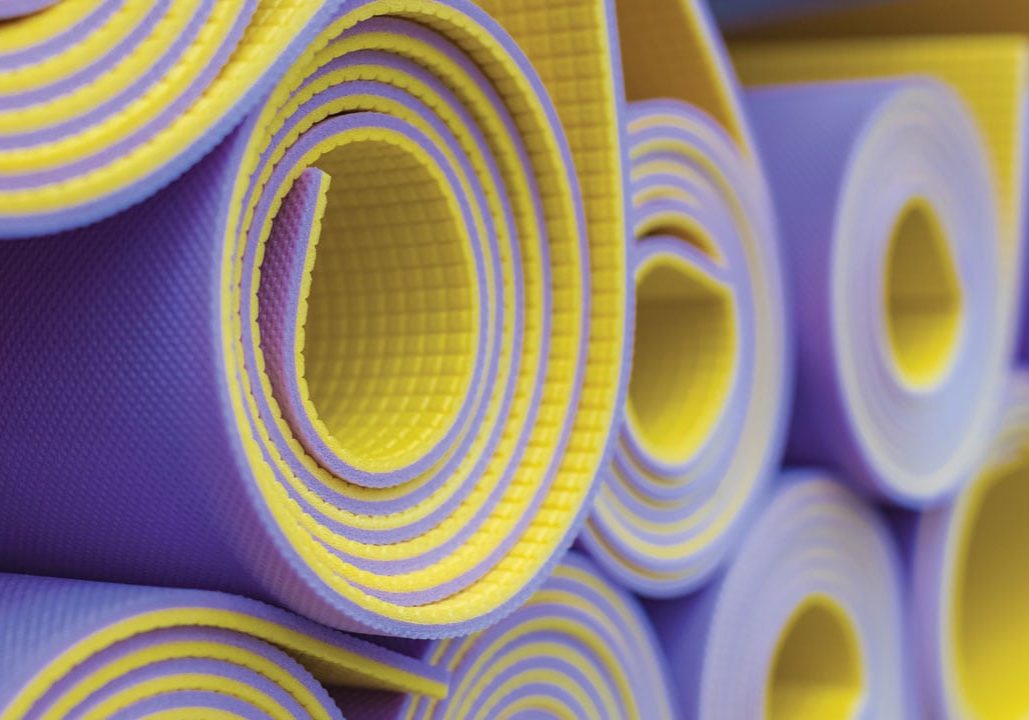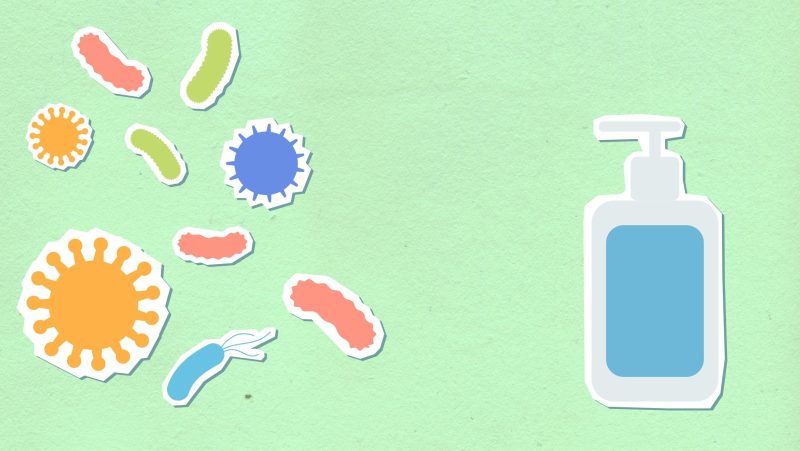
How to choose an eco-friendly yoga mat:
3 reasons to avoid PVC — Part 2 of 3
You’ve ditched the plastic, got an eco-friendly water bottle for the gym and a reusable coffee cup for the café, so this might make you gulp: your yoga mat is probably made of plastic! Part two of a three-part series by Bethany Norman
Most yoga mats are made of polyvinyl chloride (PVC) which is made from fossil fuels. As you already know, fossil fuels are not sustainable, and have a negative impact on the environment when processed, used, and disposed of. But have you heard of phthalates, or dioxins, or considered what happens to your yoga mat when you are finished with it?
Three, more, reasons not to use PVC (in anything):
1. Stop the continued use of phthalates
PVC has a wide application. It can be rigid, like the pipes and window frames in your house, or soft and flexible like your yoga mat. This flexibility is achieved through the use of plasticisers, which are mostly phthalates.
The problem with phthalates is that that they aren’t bound to the PVC and leach into the atmosphere, and contaminate the environment. Phthalates are everywhere; humans are exposed to them as gases, or dust, which we inhale, or absorb through our skin, and as particles that have contaminated the food chain.
These chemicals consistently have a bad press, however the science isn’t conclusive about what impact they are having on us. They are classified as endocrine disrupters which means they have a negative impact on the hormonal system of humans and animals. The worst endocrine disruptors cause tumours, birth defects, and problems with development in living organisms.
Not all endocrine disrupters have such an extreme impact, and those that do have been banned, but controversy remains over the remaining chemicals, with no conclusion yet from the scientific community as to how safe they are.
Still, by the sound of it, trying to avoid PVC, and the continued use of phthalates, is a good thing for your own health, and the health of the natural world.
2. Stop the formation of micro plastics
Another problem with PVC is that it can take 100 years, at best, to biodegrade. Whilst this happens, it weathers, and cracks, and small particles are released into the environment. These micro-plastics, as they are known, are tiny pieces of plastic less than one centimetre in length.
These particles are a pollutant, but the problem is further compounded by the fact that they soak up persistent organic pollutants (POPs) and the resulting mix is inadvertently eaten by birds, animals, and marine creatures. In turn, the chemicals involved make their way up the food chain to those at the top. Us humans. POPs accumulate in our fatty tissues, as they take a long time to be eliminated, if ever.
3. Less PVC means less micro plastics, which can only be a good thing!
You won’t have to worry about what happens when you are done with it.
In theory, PVC can be recycled. But in practice, it just doesn’t happen at a local level in the UK. A lot of work has been done on an industrial level through VinylPlus, the voluntary sustainable development programme of the European PVC industry. VinylPlus is encouraging the industry to clean up its act with regard to recycling, the use of additives (like phthalates), sustainability, greenhouse gas emissions, and energy and resource use. The industry is moving towards a low-carbon circular economy, which aims for very little new plastic to be produced, and as much recycling as possible.
Despite these aims, at the end of a PVC yoga mat’s life at the moment, it will be sent to landfill, or get incinerated. When disposed of in landfill you get leached phthalates, and micro-plastics, and it’s no better when incinerated, as PVC forms dioxins when burnt. Dioxins are one of the POPs, mentioned previously, that make their way up the food chain to lodge in our fatty tissue.
Like with phthalates, it is not clear exactly what effect dioxins have on animals and humans. From animal studies, and accidental exposure incidents, it is concluded that dioxin is a probable carcinogen, and has negative effects on the immune, endocrine, reproductive, and nervous systems of animals and humans.
Let’s do our bit, and not buy any more PVC yoga mats.
Is there anything good about PVC?
It seems there are many good reasons to stay away from PVC for your own health, and the state of the environment.
On the other hand, this material has its advantages. It is mass produced, which makes the end products cheaper, which it turn gives better accessibility. If made well, PVC is also long-lasting; indeed, some PVC yoga mats are marketed as a ‘mat for life’.
So, if you choose to go with a PVC yoga mat, follow these top tips:
- Consider recycled materials. You’ll not only be stopping new plastic being produced, but also helping the recycling of PVC take off.
- Invest as much as you can afford to get a mat that is made from top quality materials so that it will last your lifetime at least, if not more.
- Considering that there is a sustainability scheme that covers PVC made in Europe, it could make sense to look for EU material, so that you know you are buying PVC that is as safe as possible.
- Invest in a mat that will stand the test of time; choose a dark colour (so dirt doesn’t show up as much), and a classic design (if you are the sort of person who likes the newest fashion, please don’t buy PVC if you know you will get sick of it and want to replace it the following year!).
Repurposing your old mat
Now, I hope I haven’t made you feel guilty about your PVC mat. This is not my aim, being a yoga teacher I have many PVC mats. If you have one too, I think the most important thing to do is accept that it has been made, and purchased, so use it for as long as possible, and then repurpose it when you can no longer use it for yoga instead of putting it in the bin.
When it has reached the end of its life as a yoga mat, don’t send it to landfill, or to get incinerated, get out your scissors, and get creative:
- Cut down to use as a travel mat (make it the exact length and width of your down dog).
- Around the house: under rugs to stop them slipping, as tea coasters, or place mats, as surface protectors under pot plants, as a non-slip mat in the bathroom, to place dirty shoes on by the door.
- For pets: make the pet bed a little softer and cosier, or use as a pet place mat for messy eaters.
- In the garden: use as a kneeling mat when weeding.
- Out and about: one-person waterproof picnic mat, thin portable cushion (for cold, hard seats at the football).
- Find out if local animal or gardening charities need it.
I hope you feel empowered now to choose an eco-friendly yoga mat, why it could make sense to avoid PVC, and what to do with your old mat so that it doesn’t end up getting incinerated or sent to landfill.
Find out what some of the other alternatives are in the next part of this three-part article.







